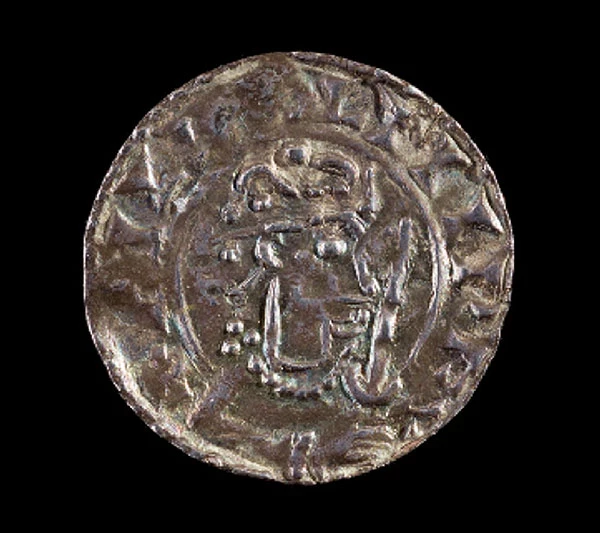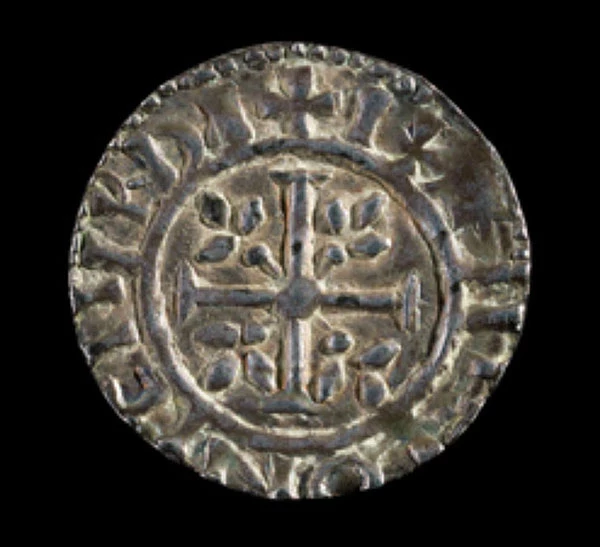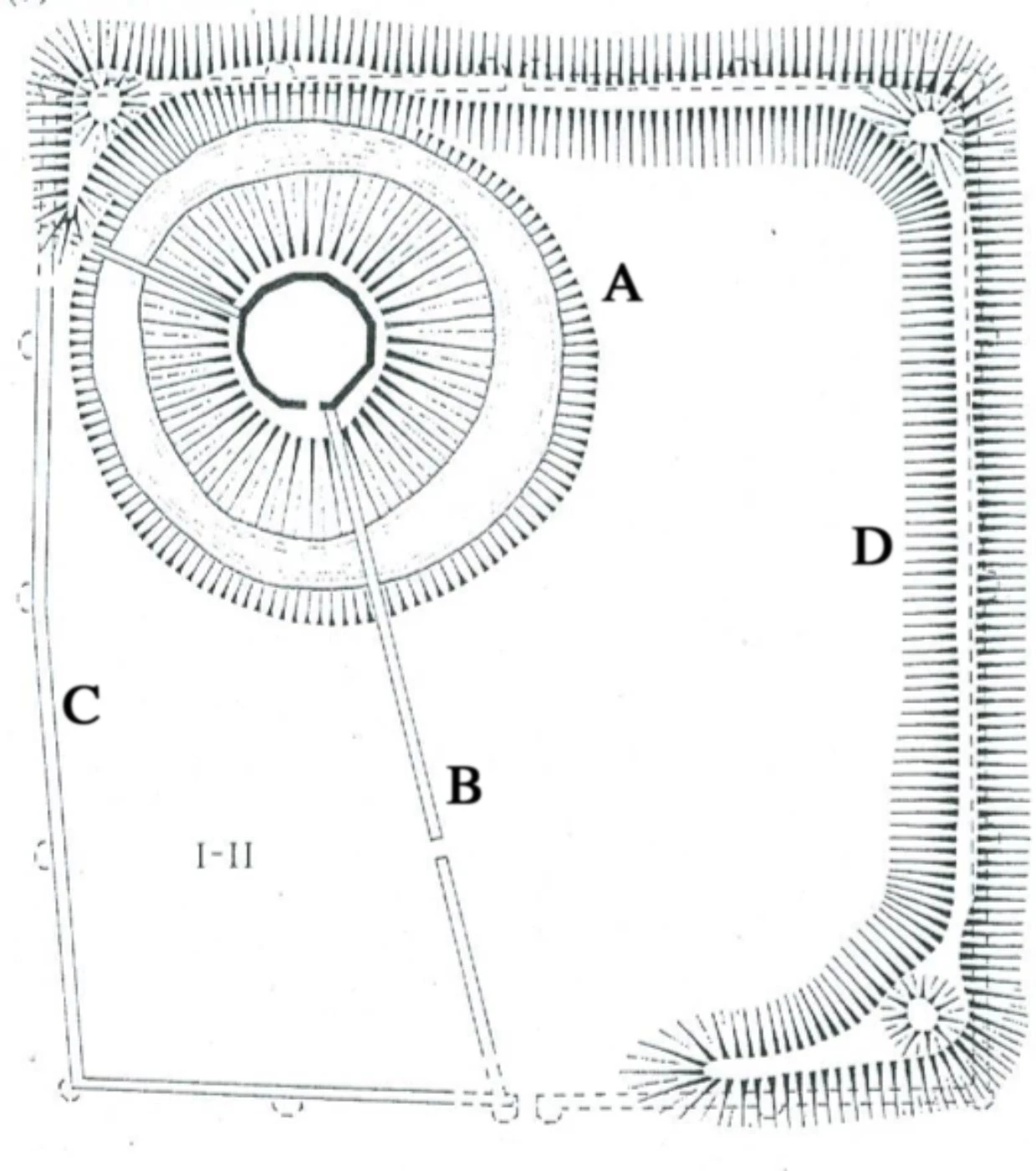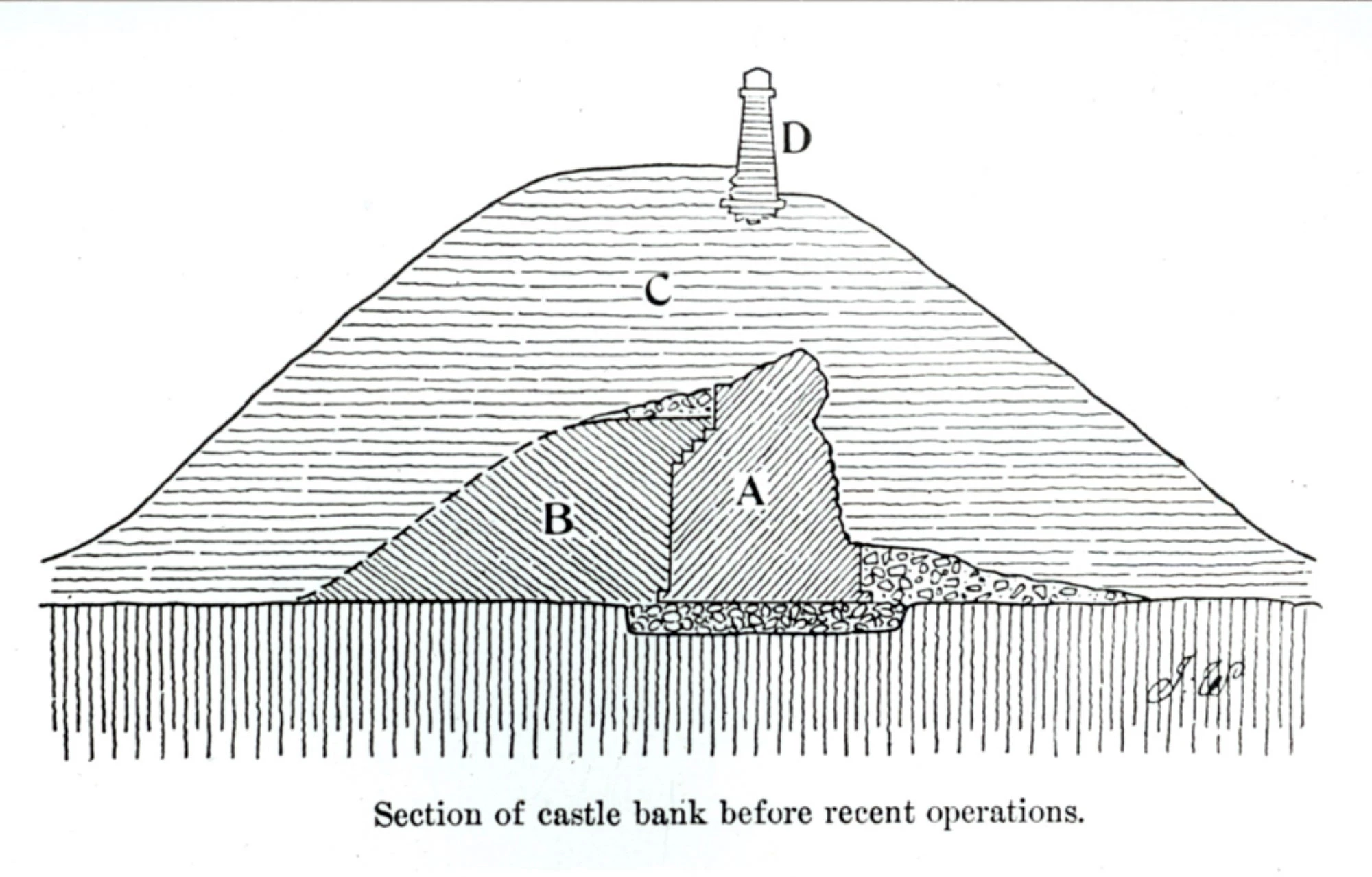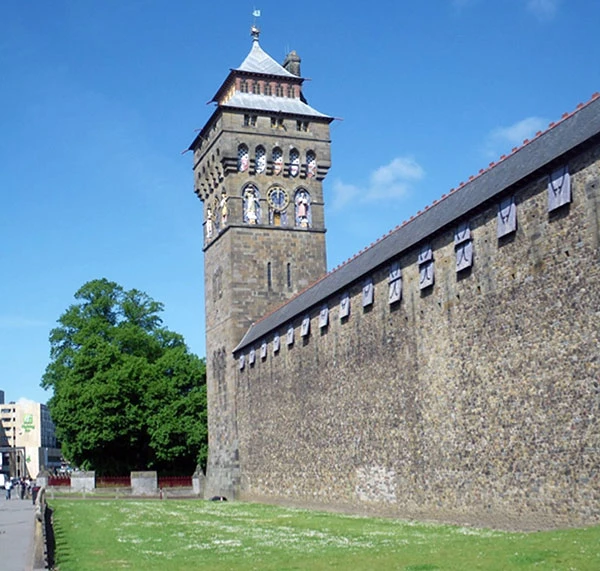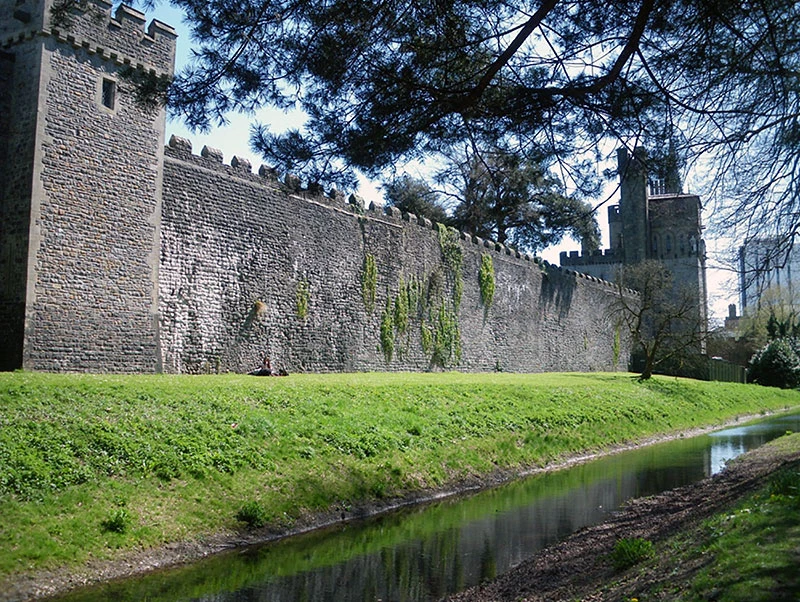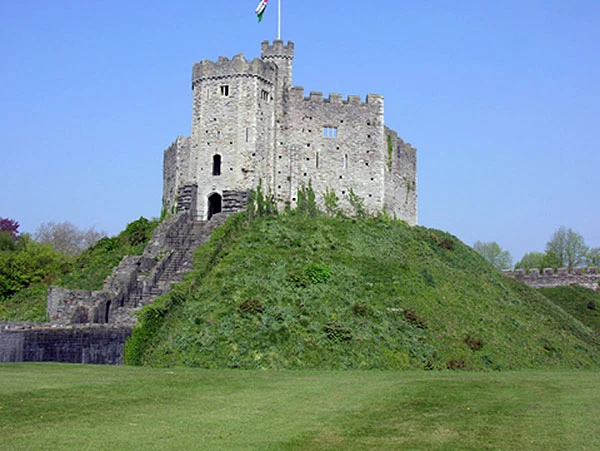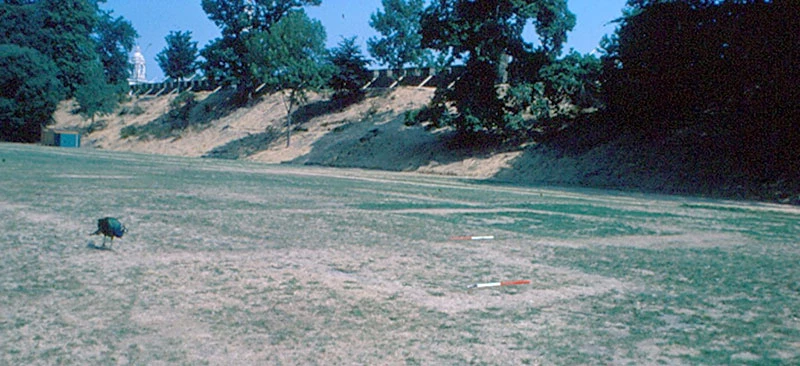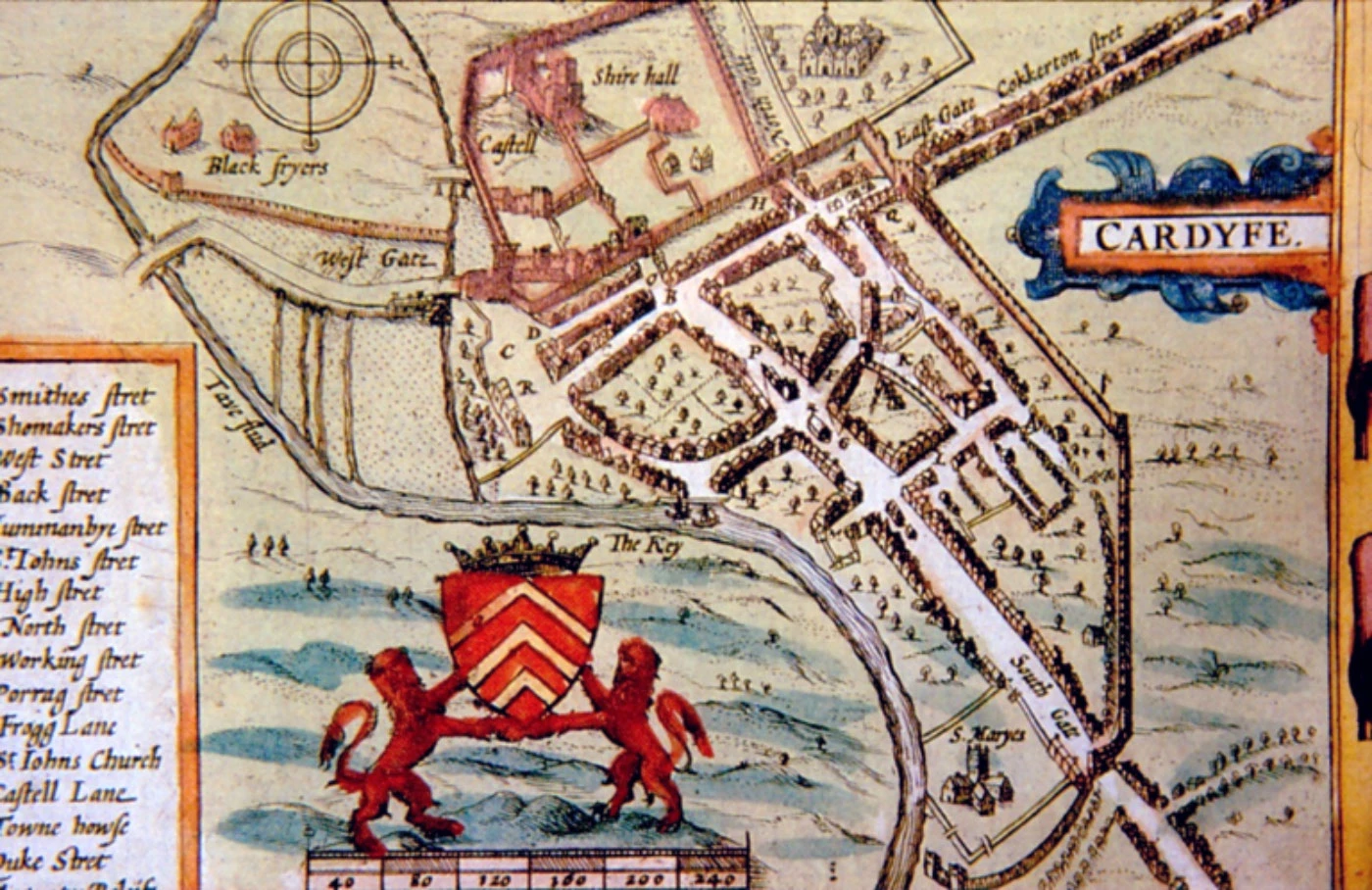Norman Cardiff and minting coins
Coin of William Rufus - front
Coin of William Rufus - reverse
Amgueddfa Cymru-National Museum Wales has just acquired a rare piece of Cardiff’s early history: a silver penny of the Norman king William II (1087-1100) made in the castle mint in the early 1090s.
The newly acquired coin of William Rufus.
William II, known as ‘Rufus’ (‘the Red’, perhaps from his hair colour), was the son of William the Conqueror (also known as ‘the Bastard’). During his reign the Normans made their first incursions into this part of Wales under Robert FitzHamon, a Norman baron who conquered the area and became the first lord of Glamorgan. The Normans brought with them the habit of using coinage and it seems that a mint was set up at the castle soon after its foundation in 1081. However, no coin certainly identified to be of William Rufus from the Cardiff mint had been recorded before this one showed up in 2017, within a private collection which was offered up for auction.
Prior to the Norman invasion, coinage was in regular use in Anglo-Saxon England, with a network of mints and a centralised supply for the dies used to make it, but there was no tradition of minting in Wales. Early Norman Cardiff was a frontier town, and so its mint had to fend for itself: the obverse (‘heads’) die seems to have been borrowed from elsewhere and the king’s effigy was re-engraved, giving him a slightly comical appearance. The reverse (‘tails’) was made locally from scratch – it bears a clear, if crudely engraved mint signature ‘CAIRDI’ [CIVRDI or CIIIRDI], but we cannot fully read the moneyer’s name, ‘IÐHINI’ (Ð = ‘TH’) – he may have been called Æthelwine (interestingly, a Saxon rather than a Norman name).
The designs of current coins were changed every few years – and the king took a cut every time a new coinage was issued. We now know of coins from four different issues in the name of ‘William’ (which could be either William the Conqueror, or his son William Rufus) and four more for Henry I (1100-35) from the Cardiff mint, but they are all incredibly rare. In the civil war of King Stephen’s reign (1135-54), Cardiff fell into the hands of the Angevin party of his enemy, the Empress Maud. In 1980, a hoard of over 100 coins, mostly previously-unknown Cardiff issues of Maud, was found at Coed-y-Wenallt, above Cardiff, and transformed our knowledge of that period. It included baronial issues from Cardiff and Swansea – which, for the latter, was the earliest evidence of that place-name. After that, however, the Cardiff mint disappears from history.
Our new coin of Rufus provides another piece of the jigsaw that is the early history of Cardiff and its region. Many pieces are no doubt still missing, and who knows what may still await discovery? As for the man himself, he died on 2 August 1100, whilst hunting in the New Forest, when struck by an arrow: an unfortunate accident or was he murdered?
Edward Besly, Numismatist (Coins and Medals Curator), Amgueddfa Cymru-National Museum Wales.
The Norman castle as envisaged by RCAHM. The stone keep is probably later than the reign of William Rufus and would originally have been of wood.
- Motte surrounded by a ditch
- Assumed Ward wall
- Re-used Roman wall probably without projecting towers
- Earth bank with ditch outside
A schematic section through the castle’s earthen defences before the 19th and 20th century removal of the outer portion of the medieval bank and the reconstruction of the Roman Fort wall.
- Remains of Roman fort wall
- Roman bank
- Norman bank
- Later Medieval castle wall
Reconstructed Norman castle wall between the South Gate and the Clock Tower
The west castle wall. The stretch between the towers is essentially the wall of the Norman castle.
The massive Norman motte, with later medieval stone shell keep.
The Medieval bank surviving on the inside of the East walls. The crop mark visible in the foreground is a late medieval building.
The stone wall and gateway from the outer to the inner ward, seen here looking from the Keep to the South Gate. This wall probably has its origin in the defences of the Norman castle.
Speed’s 1610 map of Cardiff.
The coming of the Normans
Cardiff today is largely a product of Victorian development, but at the very centre of the city is a historic core originating with the Roman military and later re-occupied by the Normans.
There is little or no trace of a settlement at Cardiff between the end of the Roman period and the coming of the Normans into Wales in the 1080s, although there may have been some occupation at the point where the Roman road from Caerleon to Carmarthen crossed the River Taff.
When the Normans arrived, this was the point where they chose to site the military and administrative centre for their new lordship of Glamorgan, re-using the remains of the late Roman fort for a castle enclosure and establishing a small town at its southern gate.
Reconstructing the Norman castle
Norman Cardiff had its focus in the castle, but the castle building we see today is very different to the original one. To get at the Norman castle we have to strip away the 19th and 20th century alterations made by the marquesses of Bute, which had in part involved the restoration of the walls of the late Roman fort.
The Normans threw up a massive earth bank over the remains of the Roman fort walls, from a point near the north-west corner of the castle, round onto the sides now fronting Kingsway and Duke Street. The remaining Roman fort walling (from near the present south gate round onto the side now facing into Bute Park) was repaired, although, strangely, the projecting towers which will have formed part of the Roman defences appear to have been removed – perhaps to provide material for the repairs.
This Norman wall can still be seen, albeit with a good deal of 19th century restoration, between the south gate and the Clock Tower and north of the western castle apartments.
The material for the banks on the north, east and part of the south sides was taken from a massive ditch dug around the entire enclosure. This is now filled in on Kingsway and Castle/Duke Street and underlies the present western moat and northern dock feeder.
This ditch can still be glimpsed occasionally when service trenches are opened around the castle, but a clearer idea of its scale can be gained from the evidence of John Ward, curator of the Cardiff Museum and Art Gallery from 1893 to 1912. Ward observed the underground toilets being dug in Kingsway and reported that, although completely below ground, they did not reach the bottom of the ditch.
Ward’s schematic diagram of the castle’s earthen bank shows the result of this ditch digging – the sizeable bank still present on the inner side of the castle walls (to the left of the diagram) repeated on the outside.
Inside these outer defences, the Normans constructed a massive motte – a mound rather like an inverted pudding basin, surrounded by a large moat. This can still be seen, although the mound received some landscaping by Capability Brown in the late 18th century and the moat (which Brown filled in) was re-excavated in the 19th century and may be more regular than it once was.
We can assume that there was some sort of structure on the top of the mound, probably a wooden palisade and tower, likely to have been replaced by the present stone ‘shell-keep’ in the 1240s. The remainder of the castle interior was probably divided as seen now by some sort of wall between the keep and the south gate. A stone wall seems likely but is uncertain. We can expect buildings (probably of wood) within the two ‘wards’ thus created but, to date, no certain structures have been discovered within the limited area excavated.
The Norman town.
South of the castle lay the small town of Cardiff. The classic view of the medieval town is that created in 1610 by John Speed, which shows a walled enclosure extending south from just east of the south-east corner of the castle to the bottom of what is now St Mary’s Street.
This, however, depicts the late medieval town. It is likely that the first Norman town was smaller, probably bordered by the present day Womanby Street, Quay Street, Church Street and St Johns Street (the semi-circle of streets at the northern end of the town as seen on the Speed map).
This layout can still be seen in the streets of Cardiff and it is noticeable that the junctions of High Street and St Mary’s Street, and of St John’s Street and Working Street, lie on the suggested early boundary. This, along with much else of the documentary history of Norman and Angevin Cardiff, is discussed by David Crouch (2006). Crouch’s hope that archaeology will add to this picture has so far not been fulfilled. The only excavations within the suggested first town (in Womanby Street and Castle Street), although they confirm Norman occupation, have not yielded structures of such an early date. Indeed, the assiduous digging of cellars by the Victorian residents of Cardiff has unfortunately removed a good deal of the potential evidence.
Peter Webster, Honorary Research Fellow, Amgueddfa Cymru – National Museum Wales (former lecturer, Cardiff University)
Further Reading
Cardiff Castle
The medieval castle is treated extensively in RCAHMW, An inventory of the ancient monuments in Glamorgan, Vol. III, Part 1a, Medieval Secular Monuments, the early castles from the Norman conquest to 1217, London 1991, 162-211, which, despite the title, takes the castle story up to the 20th century. Further background to the restoration of the Marquesses of Bute is provided by J. P. Grant, architect to the 4th Marquess (Cardiff Castle, its history and architecture, Cardiff 1923).
The Town
The best discussion of Norman Cardiff is David Crouch. ‘Cardiff before 1300’ pp.34-41 in J.R.Kenyon, D.M.Williams (Eds.), Cardiff. Architecture and Archaeology in the Medieval Diocese of Llandaff, British Archaeological Association Conference Transactions 29, London 2006. This includes references to earlier work by W.Rees (1962) and D.Walker (1978).
